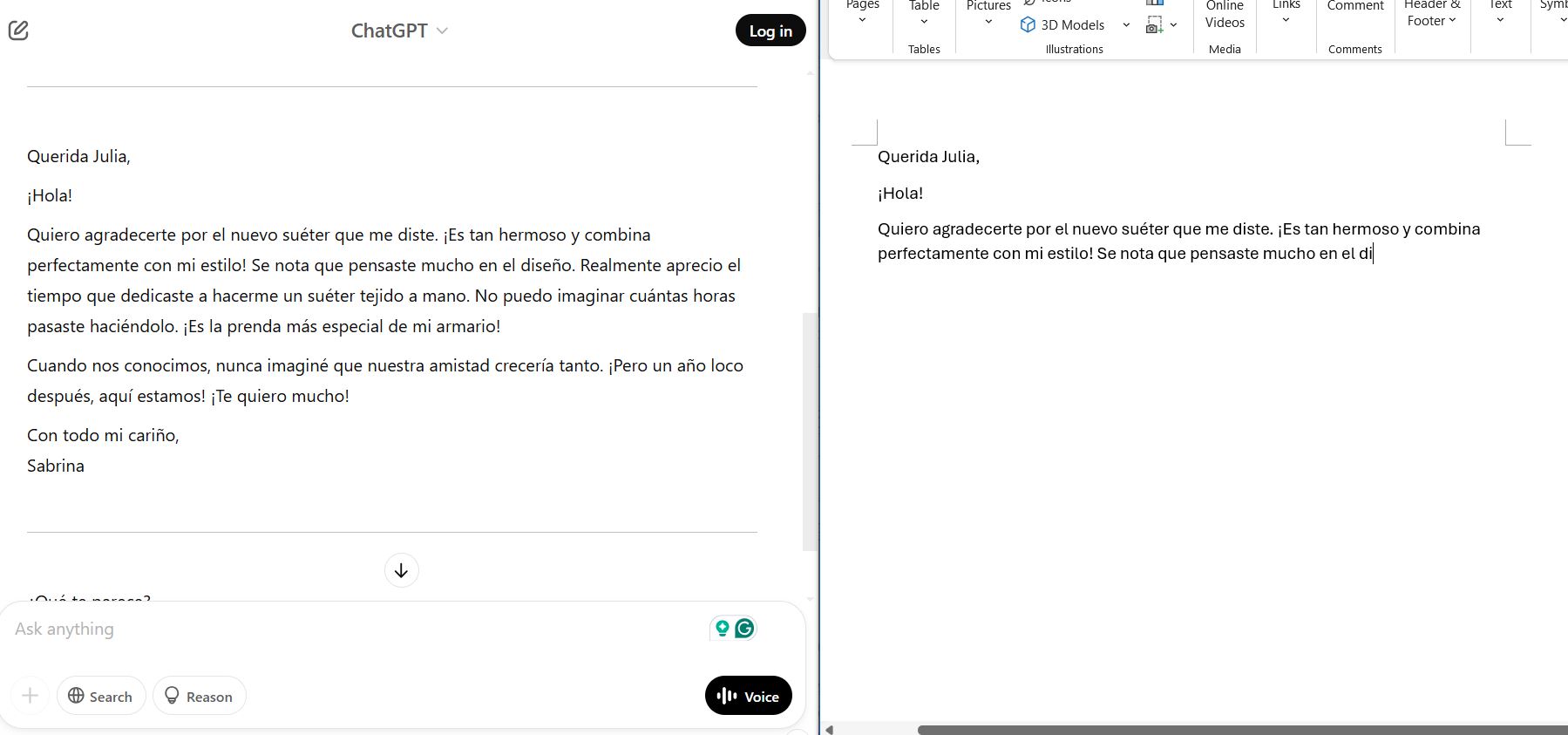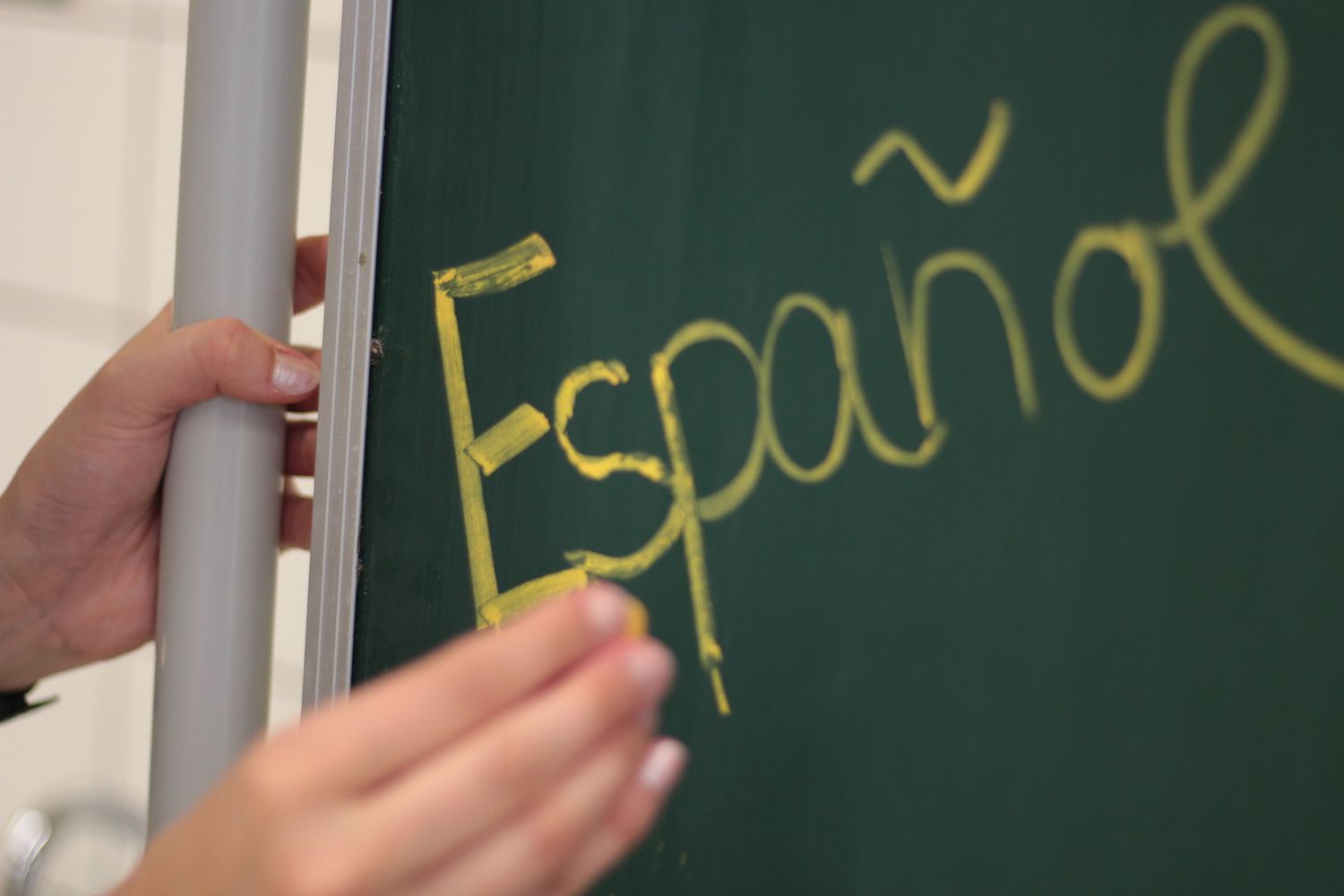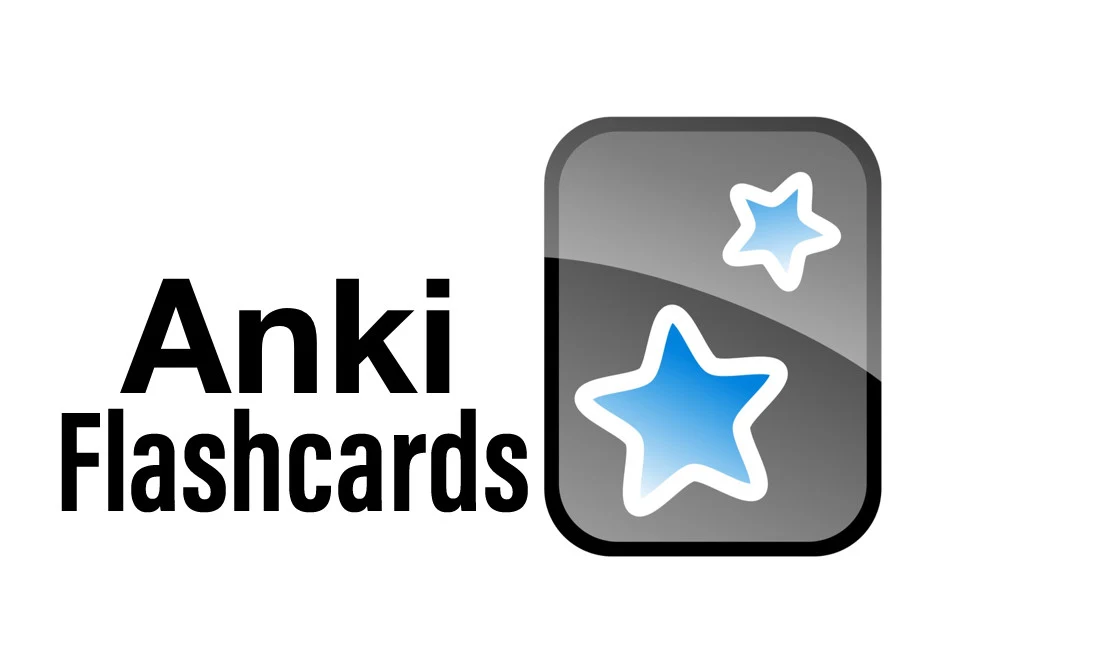Writing is a great way to practice using the Spanish you’ve learned without the time pressure of speaking. If you feel comfortable reading Spanish at an intermediate level or above, you are ready to start writing! While the best feedback generally comes from native speakers, ChatGPT is a great way to practice and get feedback on your writing for free! ChatGPT can provide you with prompts and examples, correct your mistakes, and offer targeted feedback and practice.
To get started, create a new chat and ask ChatGPT to give you a topic for your Spanish level. In the image below, I asked for an A2 essay topic. Additionally, I prefer to ask questions in my target language, so I get as much immersion as possible, but you can ask for ideas or feedback in any language!

Next, copy the prompt and paste it into a word processor like Google Docs or Word, and write a short essay following the prompt.

When you write, only look up single vocabulary, set phrases, or grammar patterns! DO NOT use a translator to translate full sentences; just do your best to write using your current knowledge! It’s ok if you make mistakes, that’s how you learn, and you will receive corrections and feedback later!

When you are done writing, paste your short essay into ChatGPT for evaluation. ChatGPT will give you a corrected version as well as feedback on your weakest areas!
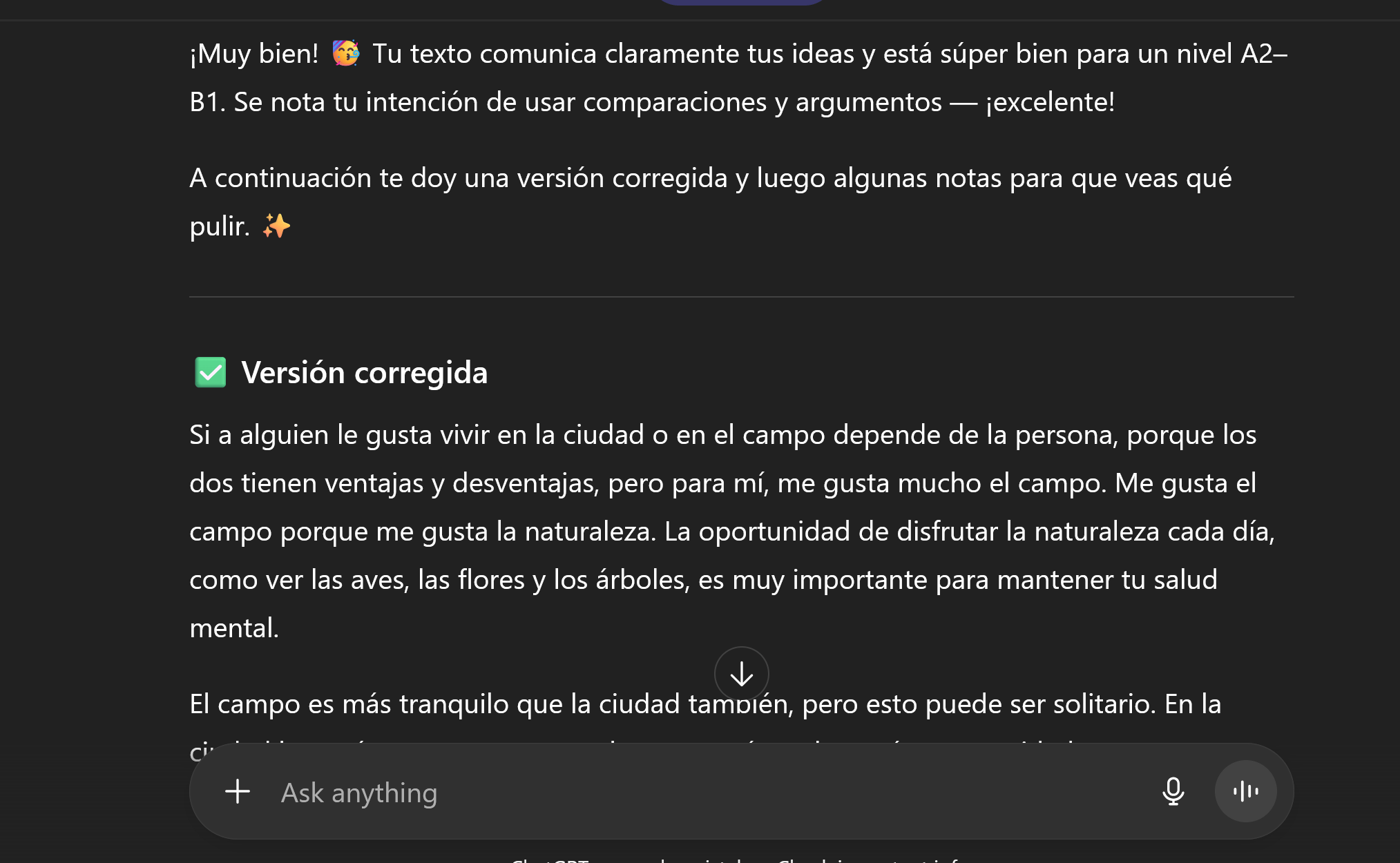
Back in your Word document, type out the corrected version of your essay and take note of any differences from your original writing. DO NOT copy and paste the corrected version! Typing it out will help you remember the corrections better!

After you’ve looked through the corrected version, you can ask ChatGPT to explain the changes it made and why.
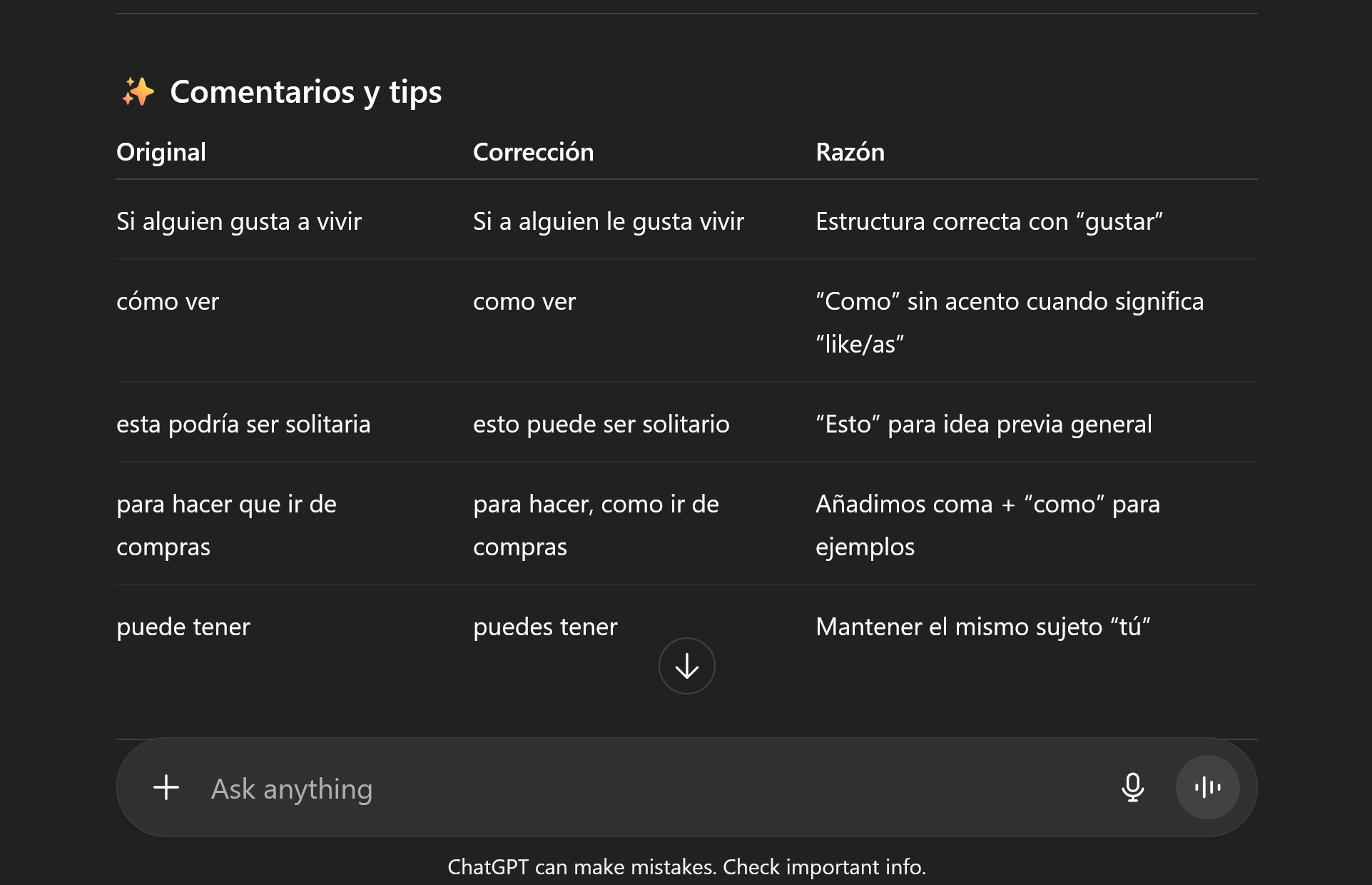
You can also ask ChatGPT to make you targeted practice for your weakest areas in the form of quizzes or prompts!
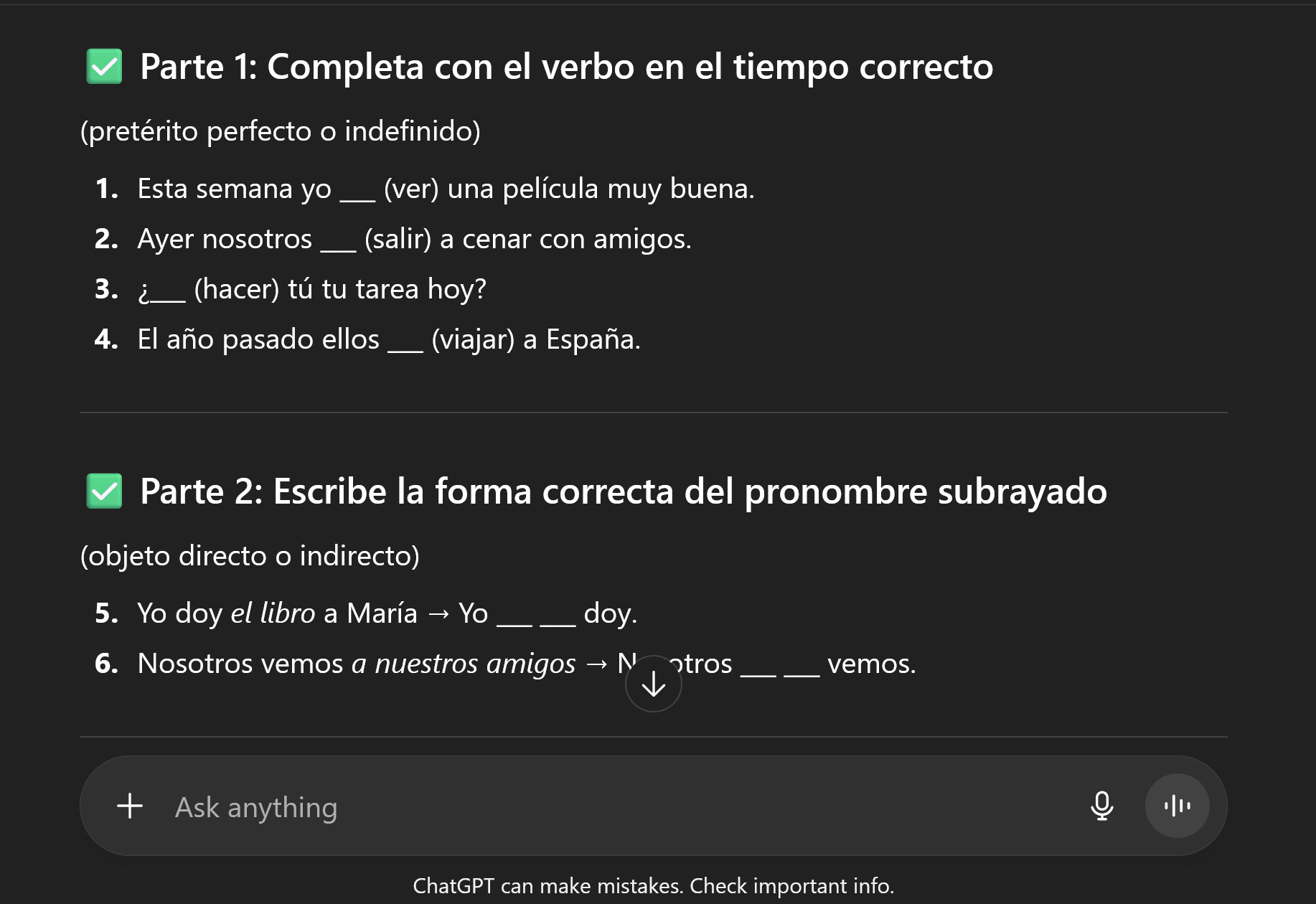
After you have worked your way through a prompt, ChatGPT will generally give you new ones to choose from. You can then choose from one of its suggestions or ask for a different prompt! Continue practicing a few times a week, and you will see your writing ability improve dramatically!
How to Write About New Topics
Whether you want to write a letter, a blog post, an essay, or a book, you need input from the same type of material to know what to do. You can’t write a book without reading one first. The idea behind this method is to get input from sources that discuss the same material you want to write about, then rewrite the topic in your own words. When you first start, you may use this method to write a simple message or a letter, but as you advance, you can use it to write more advanced pieces like a short story or an essay. In this example, I will write a simple thank-you letter, which I would consider to be relatively easy, but this is the same technique I use for writing my much more complex blog posts. When you first start writing, start with something simple and work your way up. If you choose a topic that is too difficult or try to write in the same way you write in your native language, you will be frustrated by how much time it takes. Don’t compare your writing in Spanish to your writing in your native language. You’ve had a lot more time to practice your native language, so it’s not comparable. Start with topics that you are familiar with in your native language and that will be relevant to you. Fluency comes in pockets, so you want to practice the stuff you need the most first. Writing is a great way to learn new words and phrases relevant to your interests. If you find this technique is too difficult for you, practice reading some more and come back to it later.
Not sure what to write about, and looking for a prompt to use this technique with? Below you will find lots of different prompts to practice your writing. Choose a prompt about a topic you are familiar with. How much you write will depend on your Spanish level. It’s ok if you can only write a paragraph or two; that’s still infinitely more than nothing at all.
What You Will Need
Besides a word processor such as Microsoft Word or Google Docs, you will use Reverso Context, a Spanish-English dictionary, and ChatGPT for this method. Have these websites open in separate tabs as you write so you can reference them at any time.
You will probably also want to use some of the reading assistance tools talked about in the article below if you don’t use them regularly already. This will make understanding what you are researching much easier.
Letter Example
First, choose the topic you want to write about and Google it. If you don’t know how to phrase the topic you are looking for, use Reverso Context or ChatGPT to help you. In this case, I will write a simple thank-you letter to a friend who recently gave me a hand-knit sweater as a present, so I want to see examples of other thank-you letters. I’ll start by googling “carta de agradecimiento” and open a few sites to see if they have what I’m looking for. Several of these look very promising for my topic, but you may run into the issue where most of the sites are in English, even though the term you searched for is in Spanish. If this happens, you’ll need to change the language of posts Google suggests.
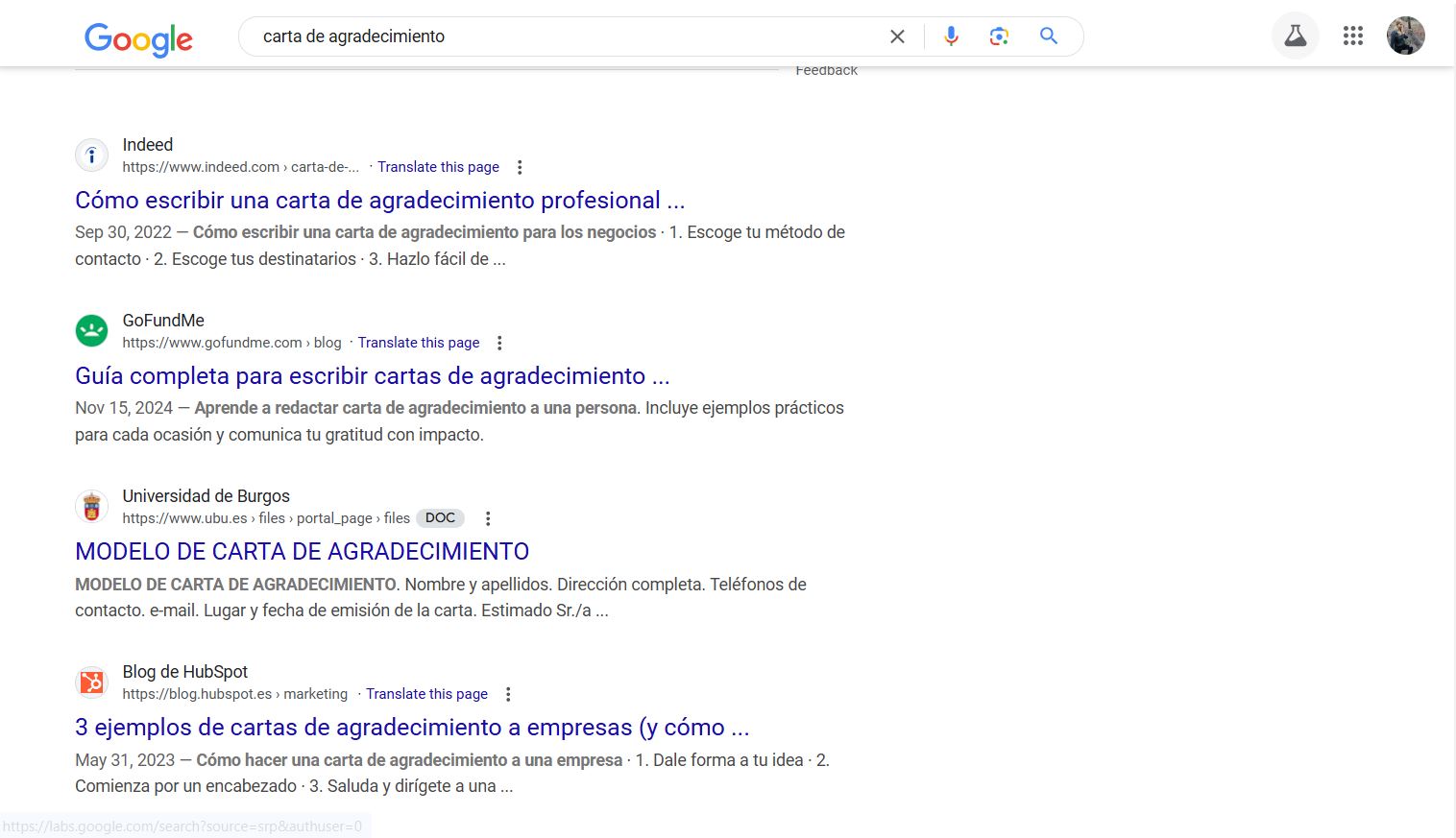
To change your search language, go to my profile in the top right corner and select “language.”

In “language and region,” change the “results language filter” to search for posts in both Spanish and English. You may also change your “results region” to Spain or Mexico so that Google gives you more Spanish websites.
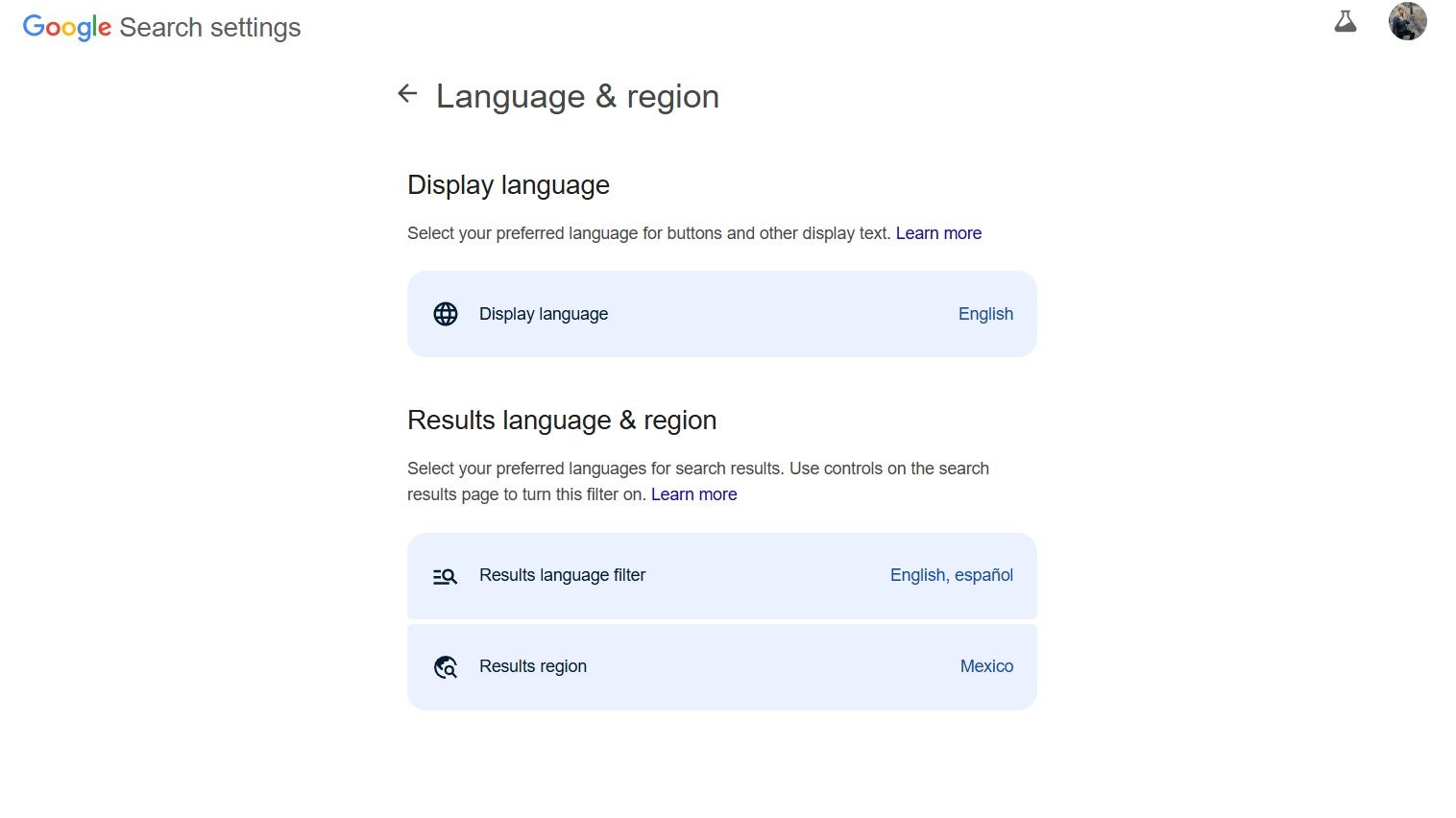
Now the language setting has changed, googling the same topic as earlier returns more results in Spanish. This will make it easier to find relevant examples.
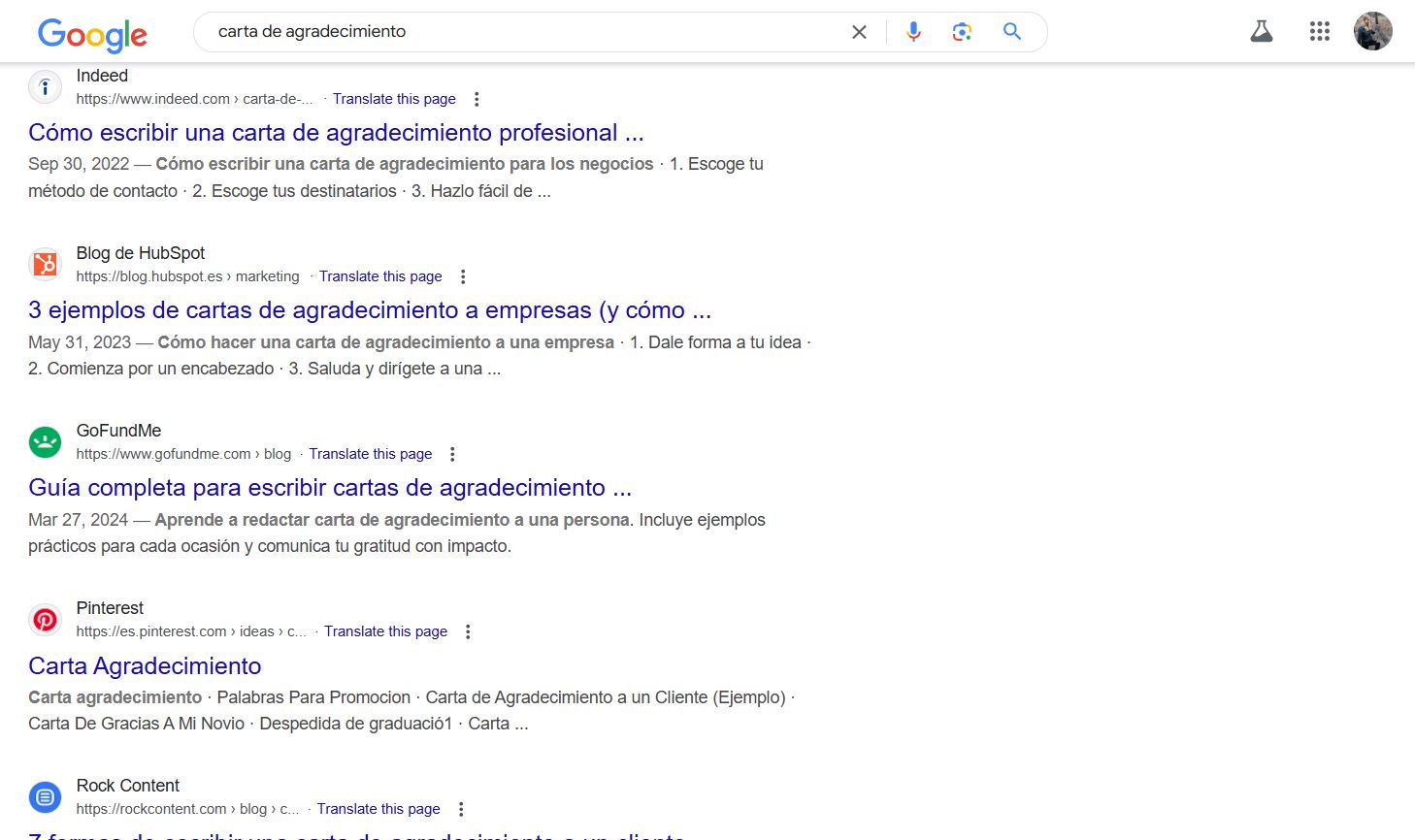
The first website I clicked on is a guide for sales managers to show appreciation for their team to boost morale and potential. While this might be interesting to read, it isn’t very relevant to a thank-you letter for a present, and it requires signing up, so I think I’ll look for something else.
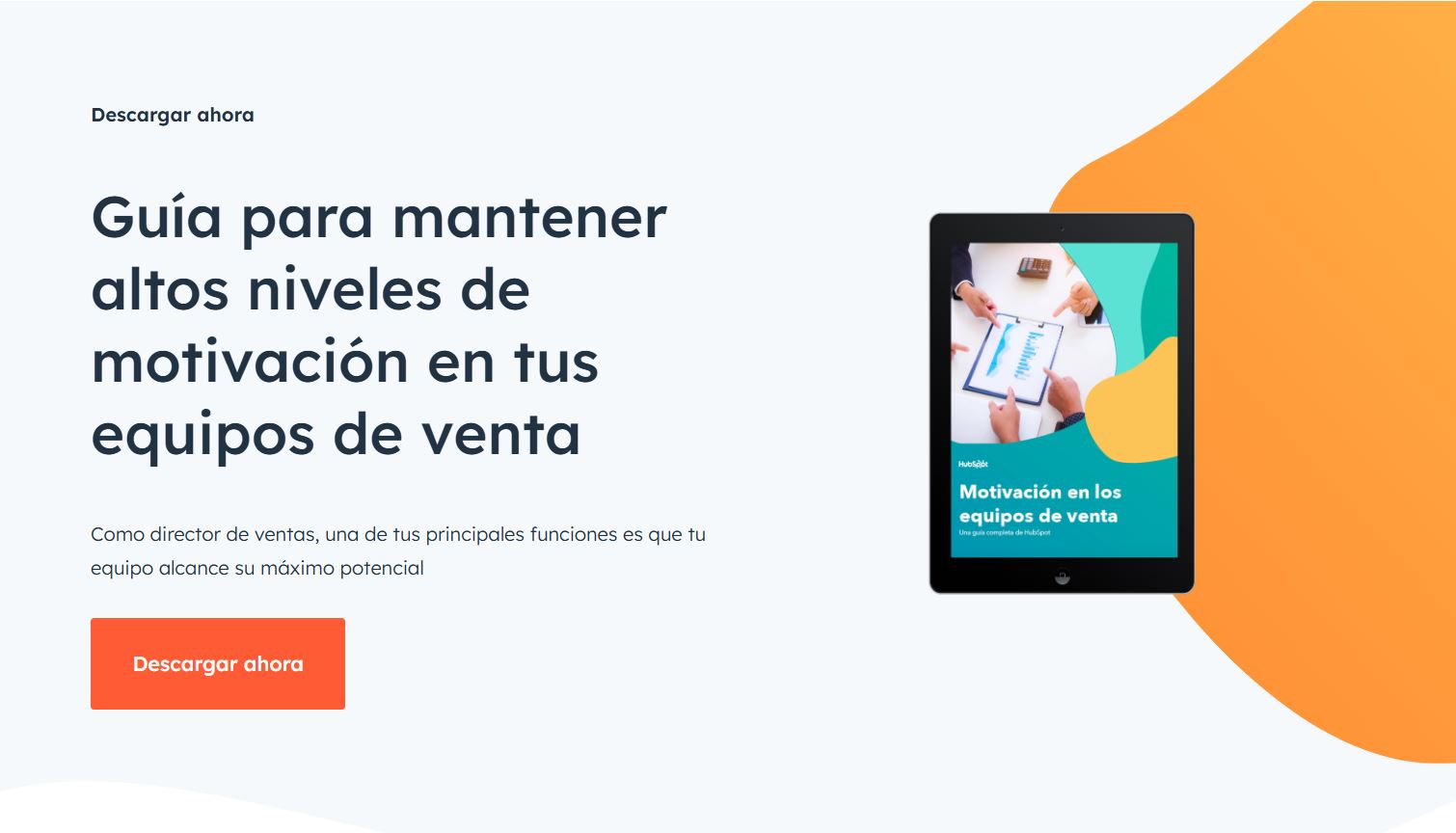
The following link is from a university and provides an example letter for thanking someone for listening to your project ideas and offering career advice. The outline and some of the phrases in this letter are relevant to what I want to write, so I’ll keep it open.
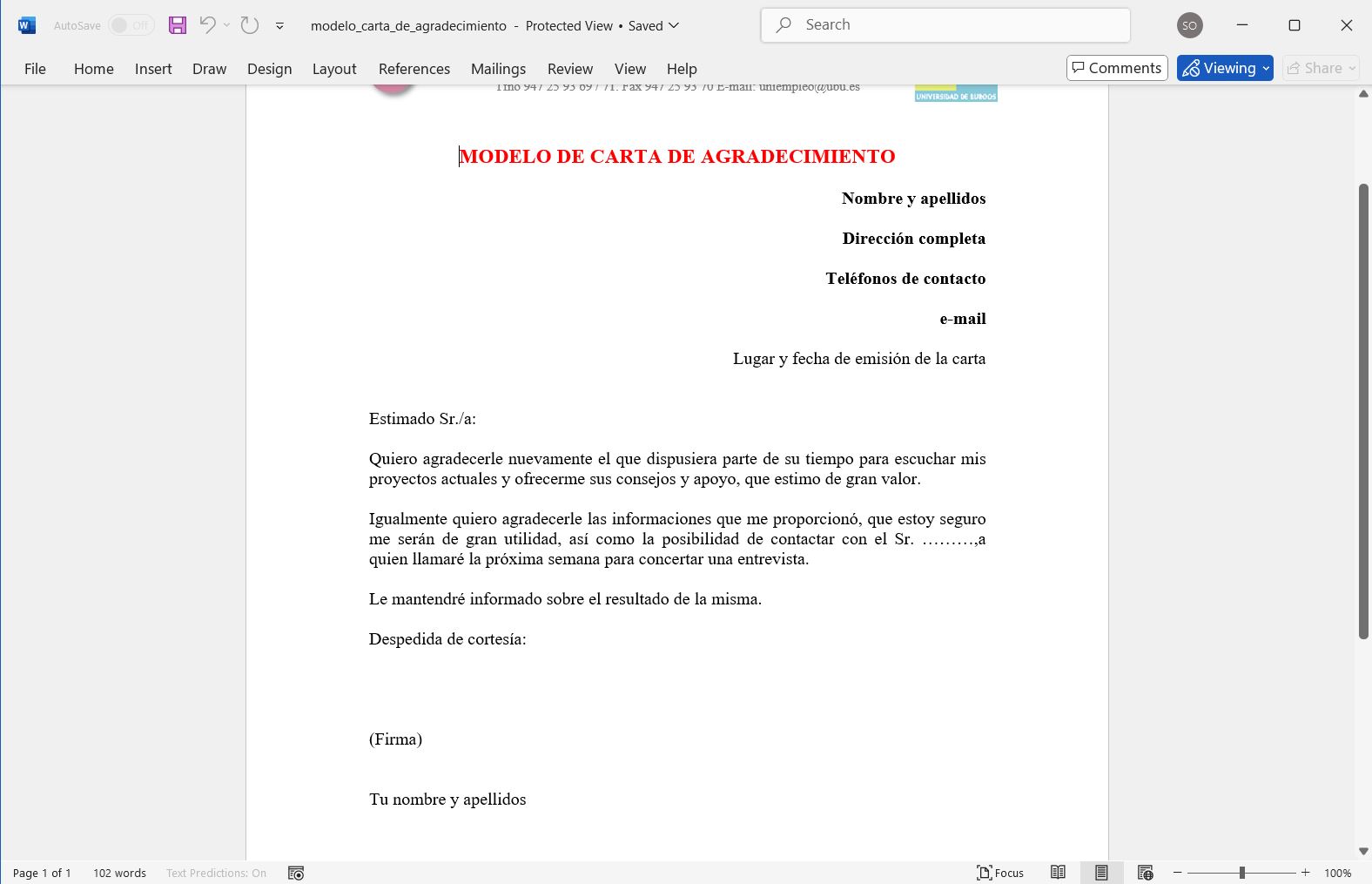
Now, I’m going to try searching for something more specific. Searching “thank-you letter for a present” should give me more relevant results.
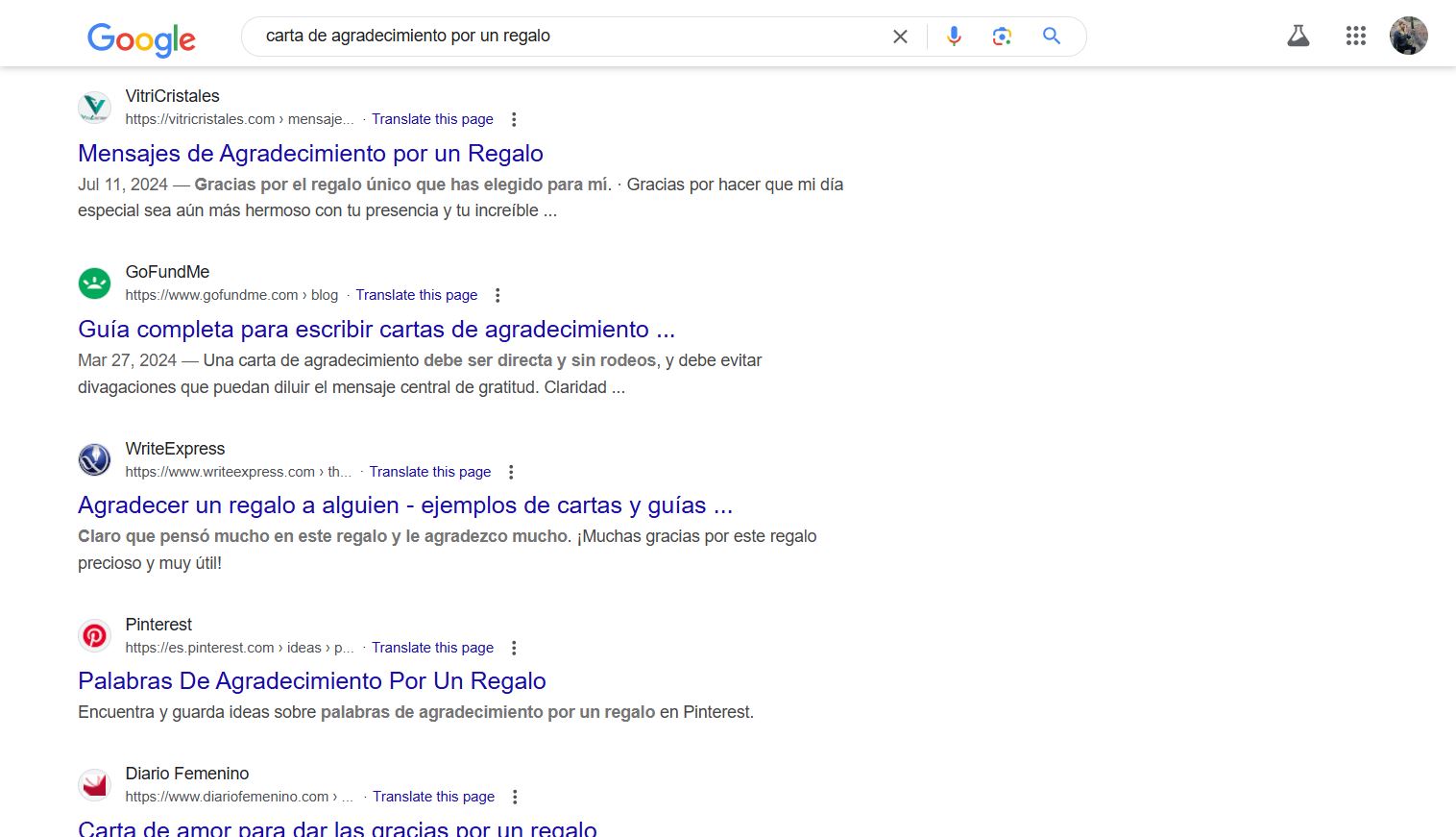
Here I found a collection of short thank-you letter examples for gifts, which is exactly what I was looking for. I’ll keep this website open so I can reference it when I start writing.
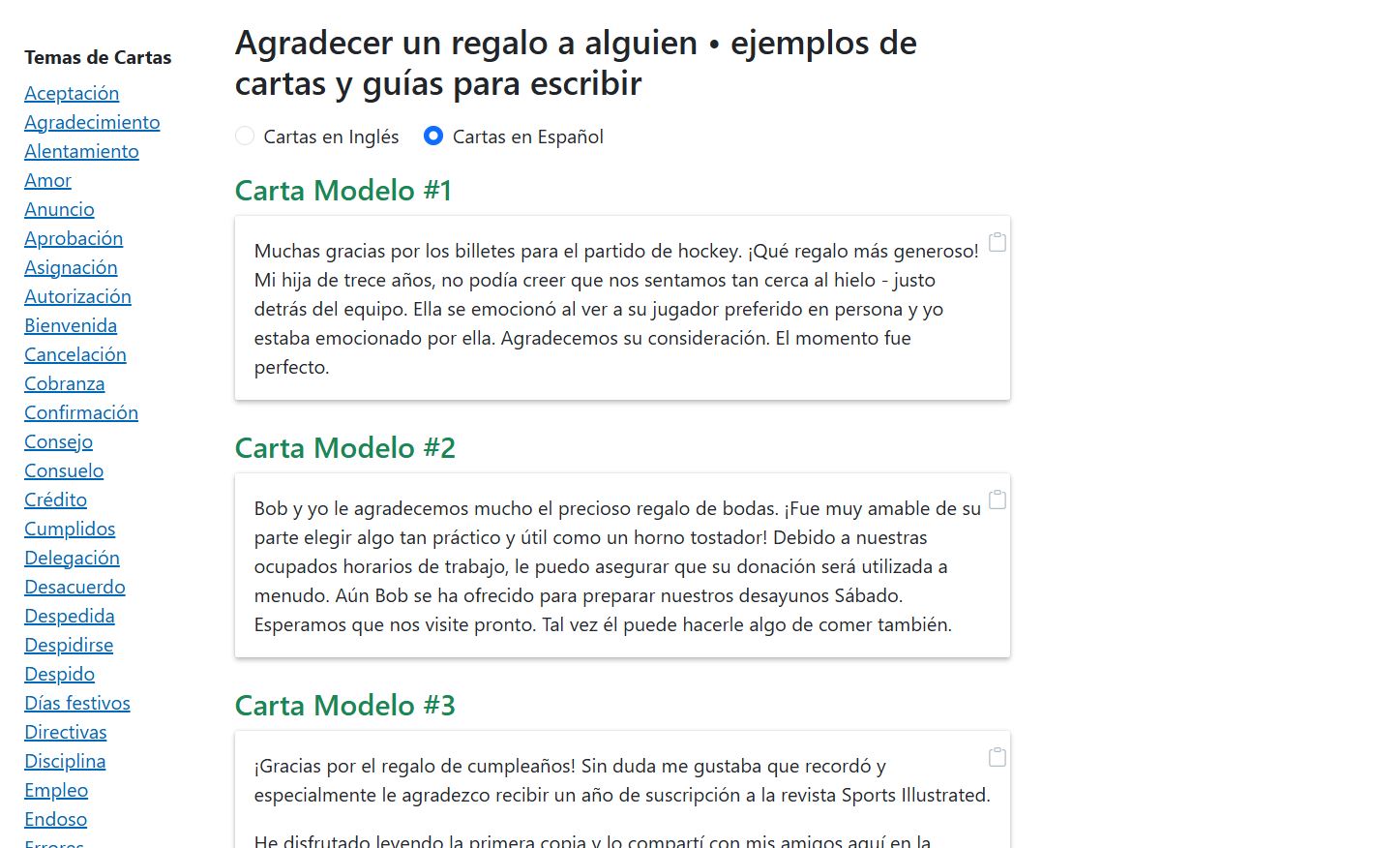
If you are struggling to find relevant examples, you can always ask ChatGPT for a more specific example. Here I asked ChatGPT to provide me with an example of a thank-you letter for a present in Spanish. I won’t copy this exactly, but I can use it to get ideas and help with my outline.
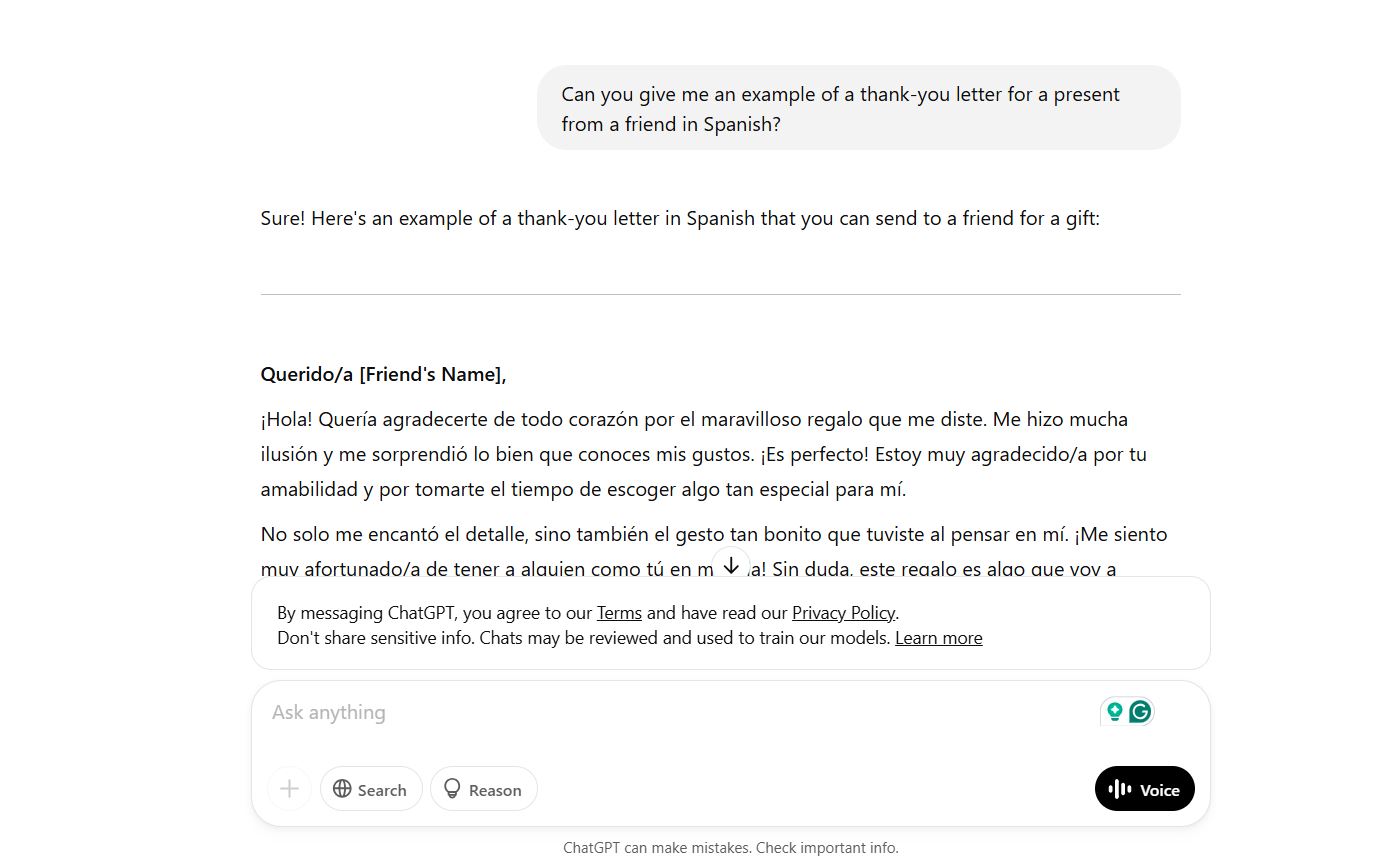
Now it’s time to begin writing the letter. On one side of your screen, open your word processor, and on the other, keep your browser tabs with example text. This method is easiest on a desktop, but you can also use it on your phone. I suggest selecting one reference as your main outline, while the others can serve as sources for vocabulary and phrases. For this letter, I’m using an outline of a thank-you letter, but I’m making it more personal by referencing the gift my friend gave me and our personal experiences together.
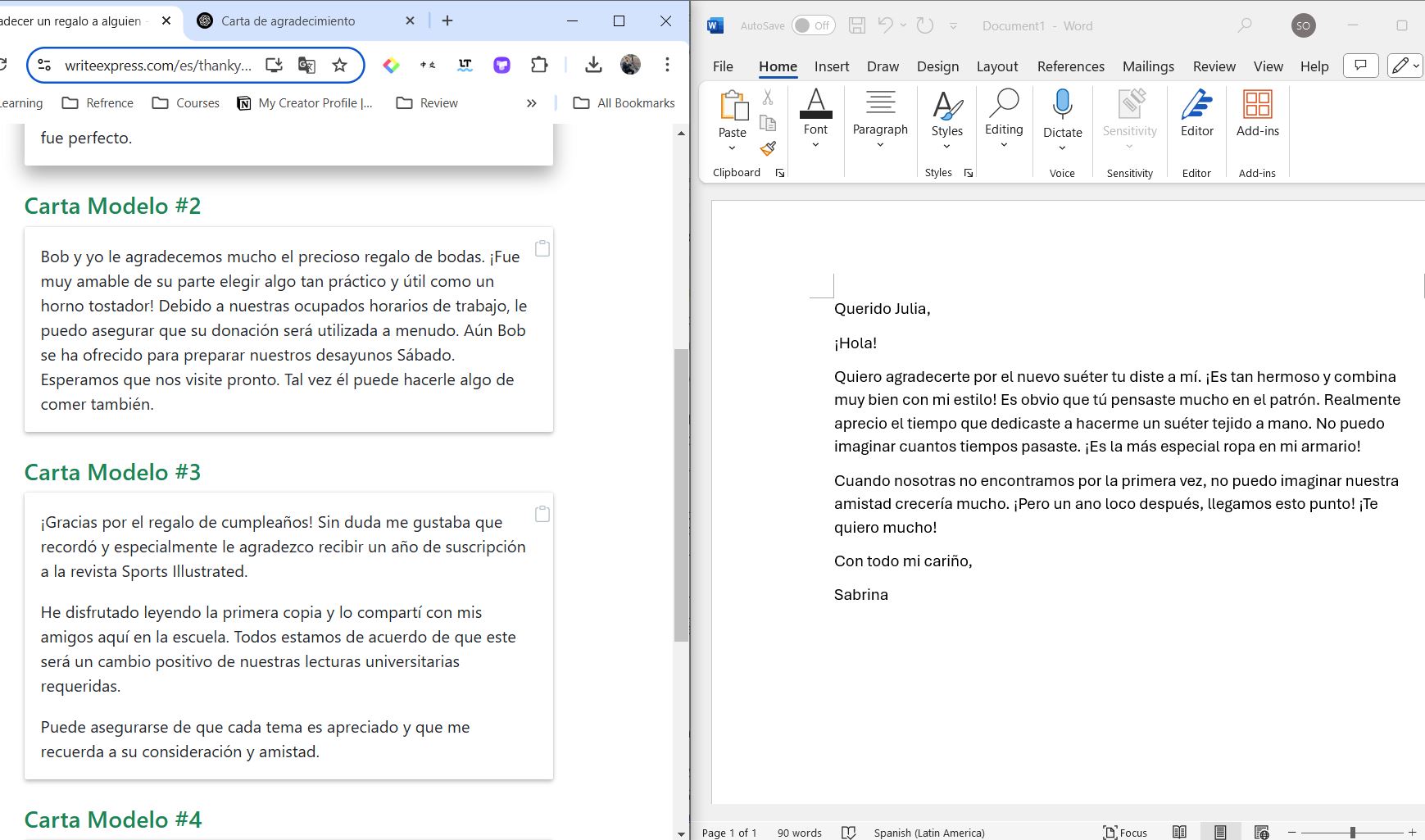
If you need to look up a phrase or word to use in your writing, Reverso Context will give you a bunch of example sentences to help you find what you are looking for. In this case, I wanted to thank my friend for the hand-knit sweater, but I’m not sure how to say hand-knit in this context. With one quick search through Reverso Context, I can see that I can use either “punto a mano” or “tejida a mano.”
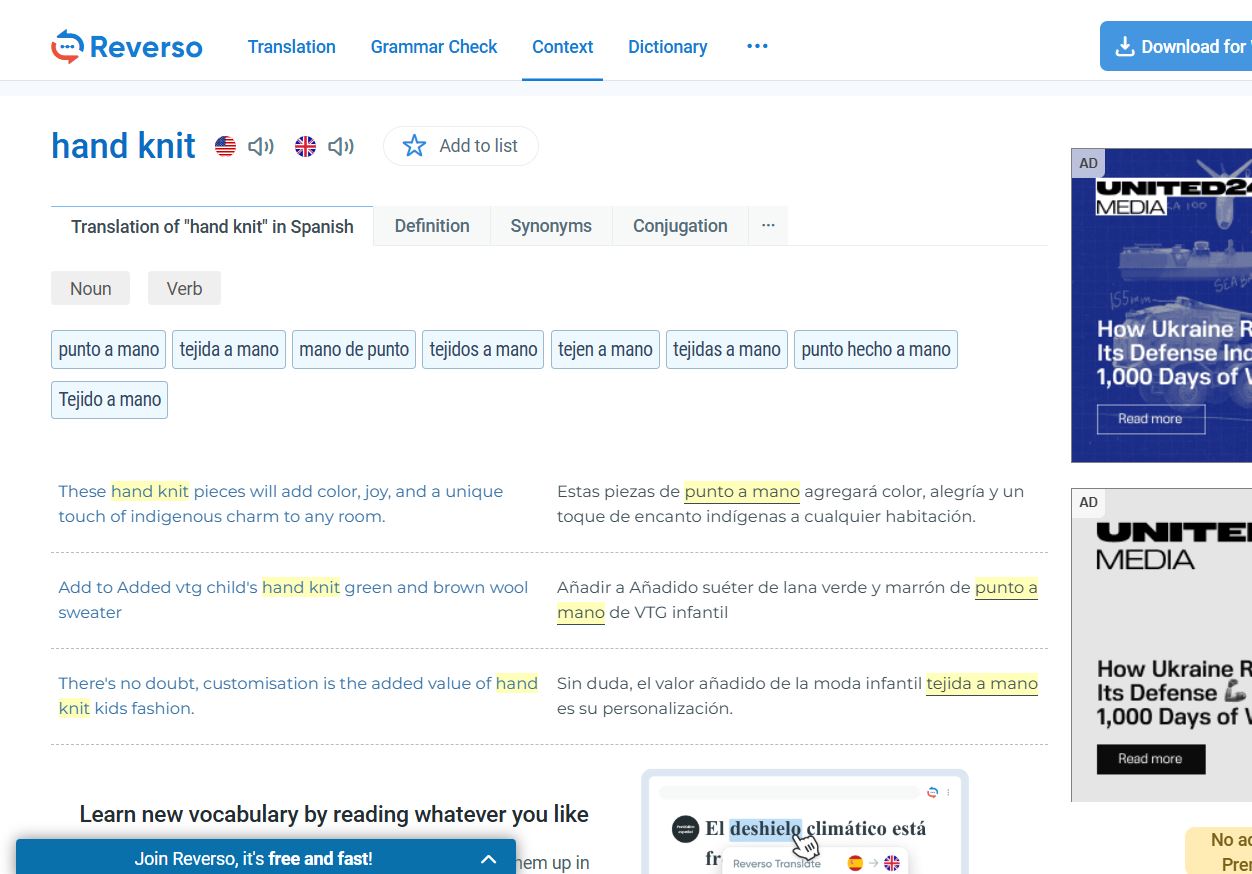
If you’re really not sure how to phrase something, and Reverso isn’t helping, you can go to ChatGPT and ask it how to say what you’re looking for. ChatGPT is extremely useful, but it needs to be used as a tool, not as a translator. If you rely on it too much to translate everything for you, your Spanish will not improve. You should only use ChatGPT for support, don’t copy anything directly.
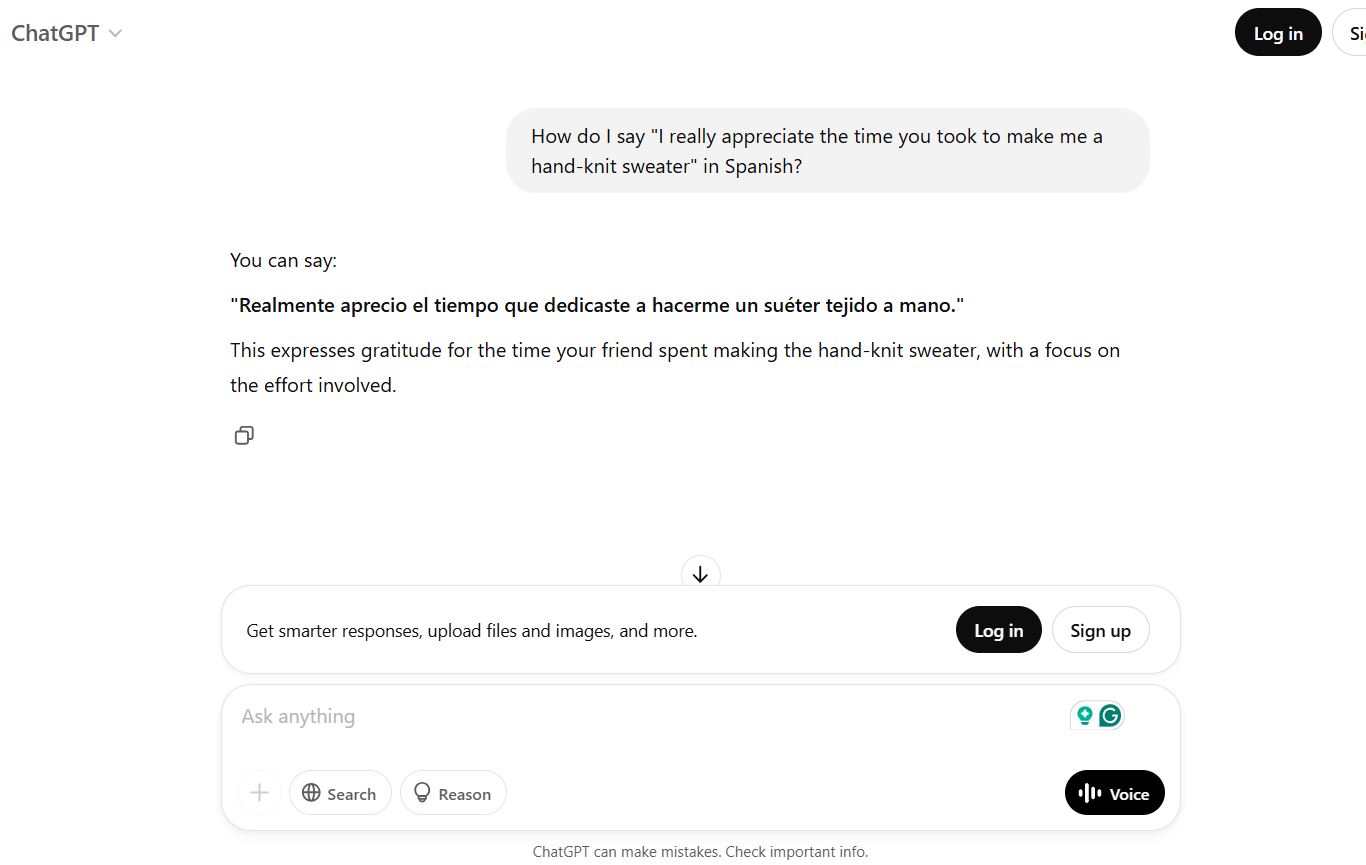
Once the post is done, put it into ChatGPT and ask it to correct the writing so it sounds natural. It’s important to ask ChatGPT to make it sound natural because it tends to make your writing sound stiff and formal if you don’t. To ask ChatGPT to correct your writing in Spanish, write, “Por favor, corrige esto para que suene natural,” then copy the text you’ve written into the chat box and press send. It will immediately send you the corrected version of your writing. If you would like it to explain the changes it made, you can write “Por favor, explica mis errores gramaticales.” If the Spanish explanation is too difficult, you can also ask it to explain your grammar mistakes in English.
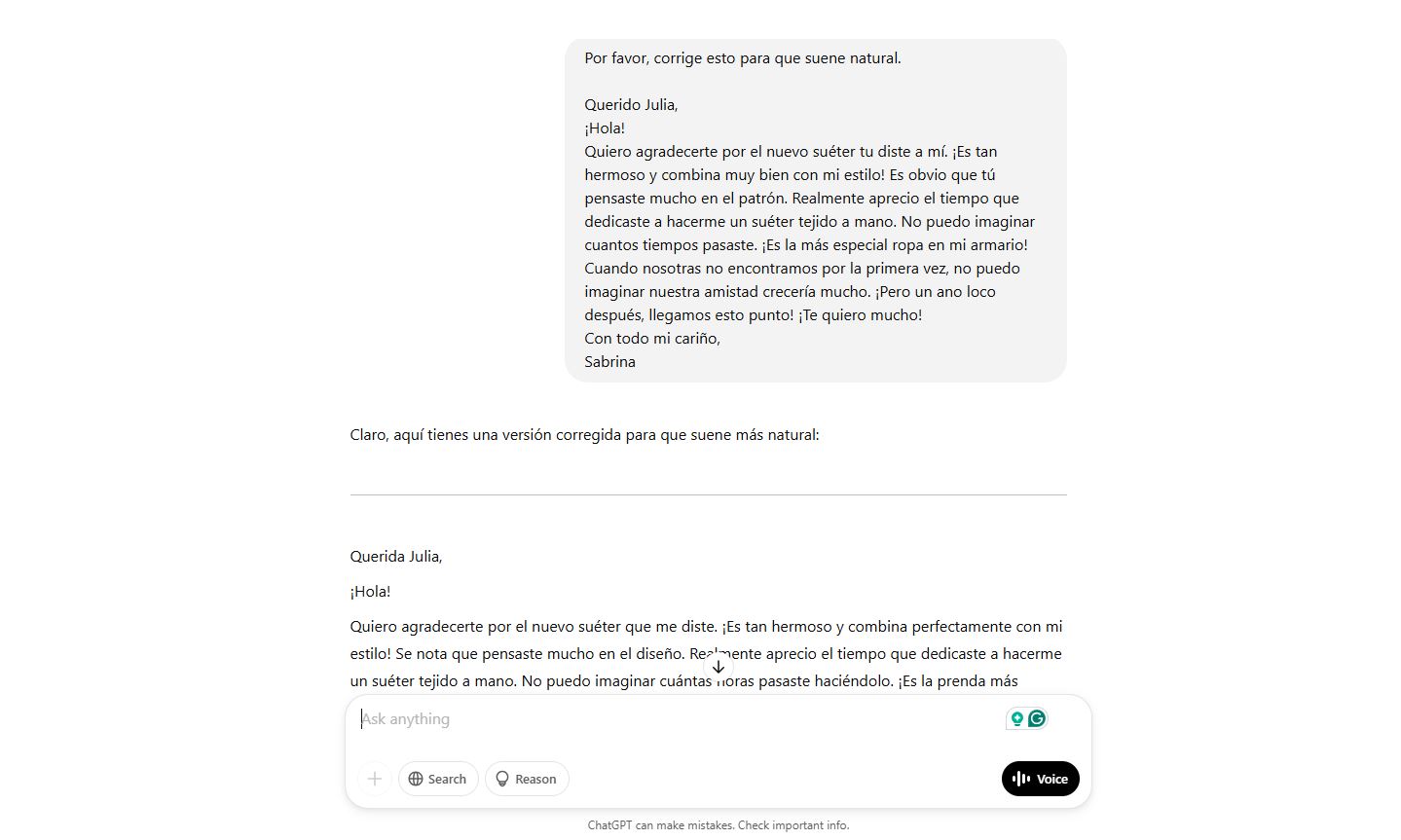
Next, compare the corrected version of the letter to your own. Don’t just copy what ChatGPT spits out and make that your letter, instead, go over it one sentence at a time to see what it changed. In my case, most of the changes it made were sentence order and word choice issues.
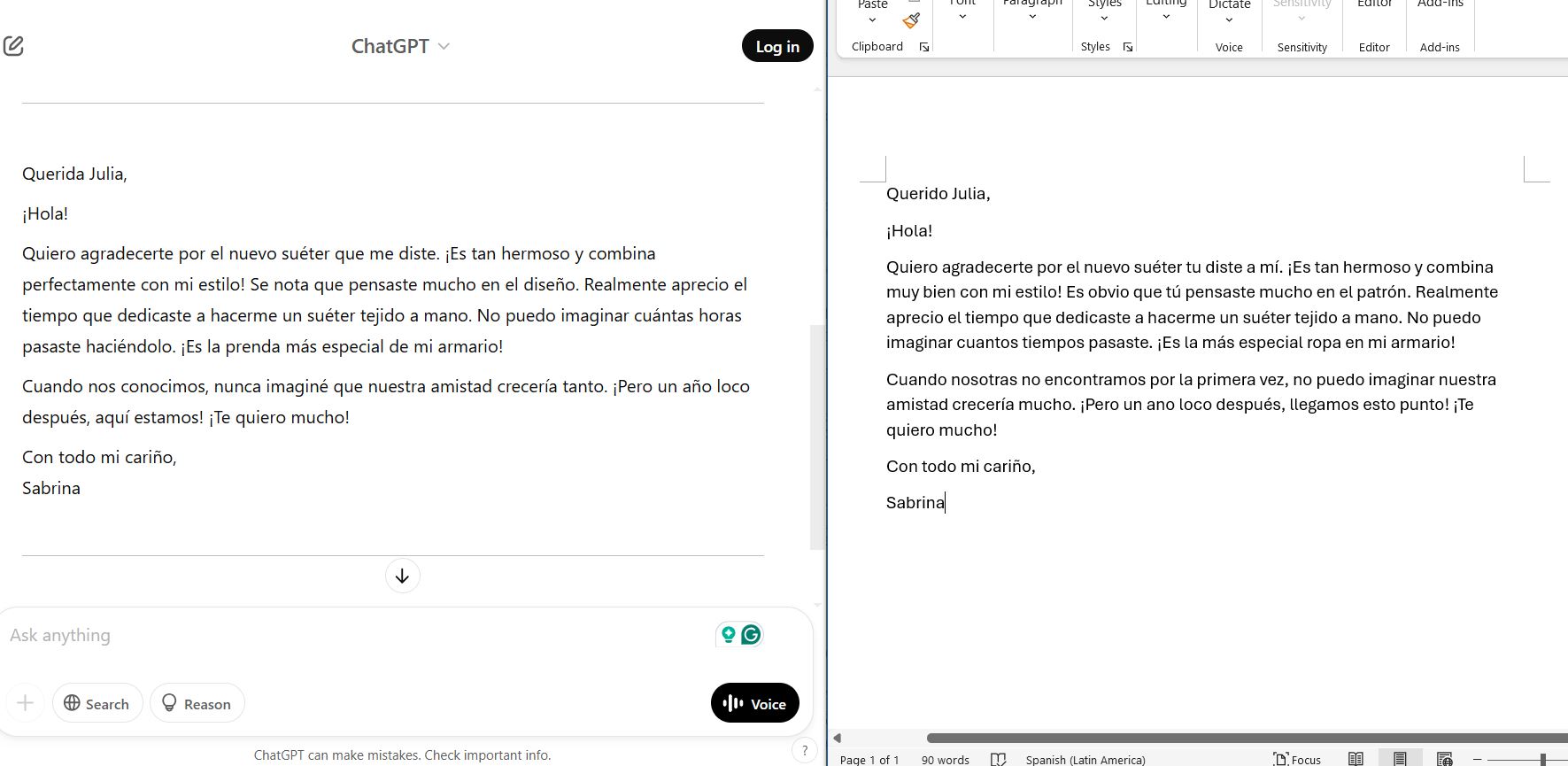
For the last step, you are going to type out the corrected version of the letter by hand. Typing it yourself will help you remember the corrections much better than just reading it. You may also write it out on paper by hand if you would like to do so, but it’s not necessary. Once you’ve written out your final letter, that’s it. Congratulations! Now all you need to do is keep practicing, and you’re well on your way to writing in complex, natural-sounding Spanish. This will also help with your speaking and comprehension since you will pick up new words and phrases along the way. You can use this technique to write anything you want: dialogues, stories, articles. All of these are great for practicing your Spanish! I recommend starting a blog, journal, or social media page in Spanish where you can track your progress and store your writing. You’ll be amazed at how quickly your writing ability improves!
